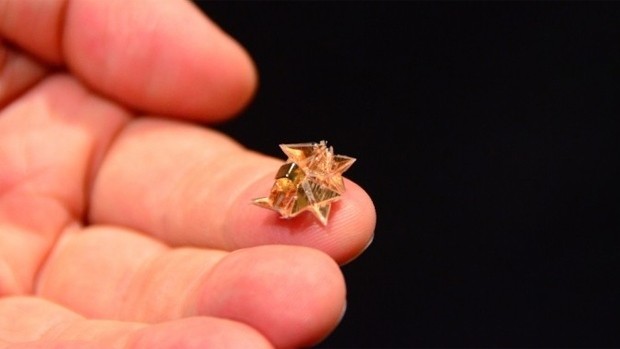Scientists from Massachusetts Institute of Technology (MIT) along with Technische Universität München (TU Munich) in Germany have revealed a remarkable, tiny origami robot that can fold itself, walk and self-destruct during the ICRA (International Conference on Robotics and Automation) 2015.
Field experts believe that this new technology can be utilized to help medical doctors with crucial surgery starting inside the patient's body.
This invention was developed by a team led by Shuhei Miyashita from MIT's Computer Science and Artificial Intelligence Laboratory where the minuscule robot is measured at 1.7 centimeters and weighs just one third of a gram.
The robot's special feature is a neodymium magnet that is covered with polystyrene and PVC that allows the robot to take on a form that is similar to origami when heat is applied to it.
When the robot is heated at different degrees, it can also fold into numerous processes and multi stages. For example, low heat can shape the robot into a specific form but when it is placed on a heating pad and raises the temperature, it generates another design.
For robot movement, scientists used an external magnetic field as opposed to a set of wires. This magnetic field involves four coils that serve as a guide towards its path. The magnets provide power for the robot to move which is cycling at 15 hertz.
Depending on the task at hand, the tiny robot can walk or even roll where it can also be disintegrated when it is exposed to acetone. Scientists are now designing and experimenting on some material for the robot so that it can also be dissolved in water.
Researchers are now planning to create another robot version of this shape shifter that will possess onboard sensors so that it can operate autonomously.
Scientists are hoping to use this innovation for medical surgeries where it can be inserted inside a human body through the blood stream where it can perform medical tasks and when the job is done, dissolve away into the stomach.
Apart from medical breakthroughs, the robot can also be brought to space missions where it can collect samples or specimens within small cracks on a planet's surface.
Watch the tiny, foldable robot in action with this video.



























